FLEX-STITCHED MANUFACTURE OF PROALP SHOES
Traditional way of shoemaking
ADVANTAGES OF FLEX STITCHED SHOES
Flex-stitched manufacture of footwear is a traditional way of making footwear, where the upper part of the shoe is stitched on the insole, thus providing flexible footwear. In modern times, it is rare for anyone to manufacture shoes following this method; more common procedures are using glue and injection moulding. Flex-stitched manufacture of footwear includes a lot of manual work and requires a lot of time, is quite demanding and an expensive procedure. However, the advantages of this type of manufacture are huge, and such flex-stitched-shoes production is considered a luxury in the footwear industry.
Flexibility
When bending during walking, our feet need to overcome less layers, as the upper part is turned outwards and stitched to the insole.
Durability
Shoes are durable, because they are stitched with a waxy thread (strong thread), each individual seam is reinforced and therefore does not falter.
Airiness
In general, the shoe contains less glue that could seal it. In addition, we use quality materials that increase its airiness.
Adaptability
With this kind of production, it is possible to adjust the shape of the shoe to the individual foot measurements.
A simple description of the stitching process:
1
LAST PREPARATION
Preparing the basic last is the first and extremely important phase associated with the type of shoe we want to make. Based on the foot silhouette we glue and sand a special rubber for modelling lasts.
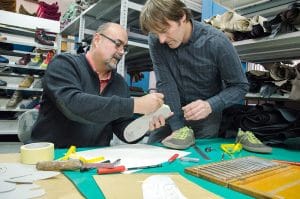
SURFACE DRAWING
With the help of the last, we sketch out the surface of the last (copy), in order to make the upper part of the footwear. The copy is then cut into individual parts, depending on their functionality and aesthetics..
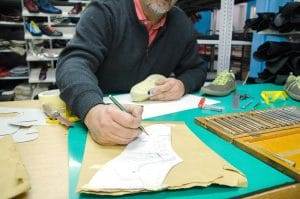
2
3
LEATHER OR MICROFIBER
The individual parts are cut out of leather or microfiber. During this phase, in addition to basic upper parts, all decorative pieces that enhance the appearance of shoes are also cut.
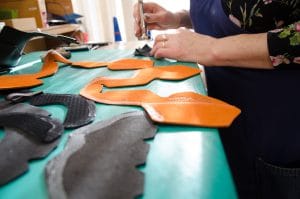
SEWING
We sew up the components. We add reinforcement in the vicinity of shoelaces, as well as at the front and back part.
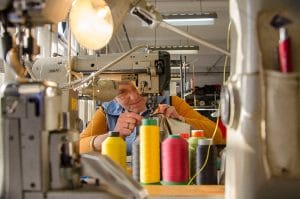
4
5
OVER THE LAST
We pull the stitch up upper part over the last.
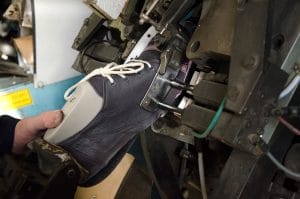
UPPER PART + INSOLE
The upper part is stitched together with the basic insole (the layer between the sole and the insert that holds the shoe together), which is made of natural material (a mixture of cellulose and other fibres). The specific of the production of flex-stitched-shoes is that the upper part is turned outwards and is then stitched to the insole. In contrast, with glued production, the upper part is turned and glued under the insole, which produces more layers when bending the shoe.
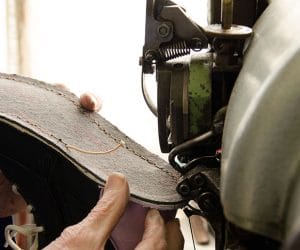
6
7
THE SOLE
At the same time, we develope a suitable sole, which we then glue to the insole.
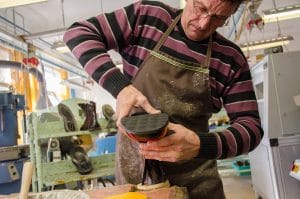
THE SHAPE OF THE SOLE
Then we put everything through a rough milling cutter and afterwards sand it down by hand, therefore making the shape of the bottom part of the shoe.
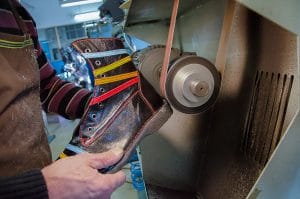
8
9
FINNISH
In the last phase, the shoes are waxed, shoelaces are inserted and inserts (which we do not glue down) are installed, the shoe is impregnated and packaged into boxes.
